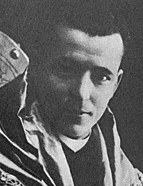

For nearly two decades, Coimbra was the sphere of activity for the combative ecclesiastic and intellectual: ordained a priest in April 1911, he became an honorary member of the CADC and later spiritual director of Catholic university students. During this period, he diversified his collaboration with the press, which he had begun at the age of 19 in the Porto daily newspaper A Palavra , at a time when he was also writing in Estudos Sociais about The Organisation of Education: he directed the weekly newspaper Imparcial from its inception in 1912 until mid-1914; he was the editor of the magazine Lusitânia (1914), directed by the jurist Francisco de Sousa Gomes Veloso; he collaborated with the diocesan weekly newspaper Correio de Coimbra (1922-1928); and he wrote “Cartas aos novos” [Letters to the Youngsters] (1925-1928) in the CADC’s magazine Estudos , which would be published independently in 1933.
It was during this period that he embarked on an academic career with a historiographical focus, divided between teaching and publishing his studies. In the year he completed his second undergraduate degree, he was appointed provisional assistant by decree of 11 November 1916, a position he held until 1919, and was the representative of the assistant professors of his School to the General Assembly of the University during this period. He held a similar post between 1919, when he became ordinary professor, and at least 1922. His appointment as Archbishop of Mitilene, assistant to the Patriarch of Lisbon, when he was ordained a bishop on 17 June 1928, would put an end to his teaching activity, which included teaching Ancient History, Medieval History, General History of Civilisation, Modern and Contemporary History, History of Portugal and Introduction to History. He also took on the role of secretary of the School on 1 November 1925, secretary of the respective Bulletin, which was to be called Biblos (and is still published), and director of the University Art Archive and Museum, where he began his duties in July 1927, although he had been the archivist-palaeographer since 1918. The Archive preserves the memory and notes of his work of cataloguing the files of candidates for holy orders.
This work is financed by national funds through FCT - Foundation for Science and Technology, I.P, in the scope of the projects UIDB/04311/2020 and UIDP/04311/2020.
